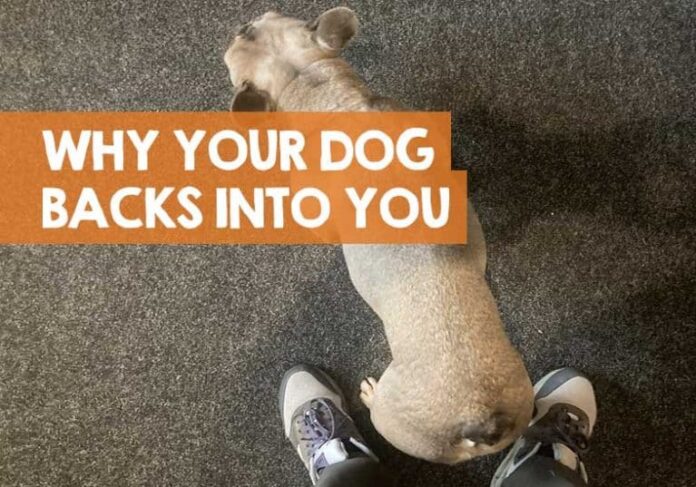Have you ever wondered what does it mean when a dog backs into you? This peculiar behavior might seem strange at first, but it actually carries significant meaning in dog body language and communication. Let’s dive into this fascinating aspect of canine behavior and understand what your furry friend is trying to tell you.
The Quick Answer
When a dog backs into you, it’s typically a sign of trust, submission, and seeking attention or protection. This behavior is rooted in their social hierarchy instincts and can mean different things depending on the context
Common Reasons Why Dogs Back Into People
1. Trust and Vulnerability
Dogs are naturally protective of their vulnerable areas. When they back into you, they’re showing that they trust you enough to expose their hindquarters – a vulnerable position. This behavior is particularly common among well-socialized dogs who feel secure in their environment.
2. Seeking Protection
Sometimes, your furry friend might back into you when feeling uncertain or scared. This positioning allows them to:- Keep their eyes on potential threats- Feel protected from behind- Stay close to their trusted human
3. Requesting Scratches
Let’s face it – dogs love a good butt scratch! Backing into you might simply be their way of saying, “Hey, how about some scratches right here?” For more insights about understanding dog behavior, check out our comprehensive guide on dog body language
4. Social Bonding
In the dog world, this behavior is actually a friendly greeting When a dog backs into another dog or human, they’re often trying to – Initiate social contact- Show friendly intentions- Express submission
When Should You Be Concerned?
While backing into you is usually harmless, there are times when you should pay extra attention:
- Excessive Behavior
- If your dog suddenly starts backing into you more than usual
- When it’s accompanied by unusual vocalizations
- If they seem anxious or stressed
- Physical Signs
- Scooting or dragging their bottom
- Signs of discomfort
- Unusual posture
How to Respond to This Behavior
When your dog backs into you, here’s what you can do:
- Stay Calm
- Don’t push them away
- Avoid sudden movements
- Maintain a relaxed posture
- Read Their Body Language
- Look for other signs of communication
- Notice their tail position
- Observe their overall demeanor
- Positive Reinforcement
- Reward calm behavior
- Give gentle pets if they’re seeking attention
- Maintain consistent responses
Expert Tips for Dog Parents
At Pet like boss, we understand that interpreting dog behavior can be challenging. Here are some professional tips:
- Consistency is Key
- Maintain regular routines
- Use consistent commands
- Respond similarly each time
- Build Trust
- Spend quality time together
- Provide positive experiences
- Respect their boundaries
- Watch for Changes
- Monitor behavioral patterns
- Note any sudden changes
- Consult a vet if concerned
Common Misconceptions
Let’s clear up some myths about dogs backing into people:
- It’s Always Dominance
- False: Often it’s quite the opposite
- Usually shows trust and submission
- Can be a simple request for attention
- It’s Bad Behavior
- Not necessarily
- Natural communication method
- Usually harmless
- They’re Being Aggressive
- Rarely the case
- More often shows trust
- Part of normal social behavior
When to Seek Professional Help
Consider consulting a professional if:- The behavior becomes obsessive- Your dog shows signs of anxiety- There are sudden behavioral changes- You notice physical symptoms
Final Thoughts
Understanding what it means when a dog backs into you is crucial for better communication with your furry friend. This behavior is usually positive, showing trust and seeking connection. However, always stay attentive to your dog’s overall body language and behavior patterns.
Remember that every dog is unique, and their behaviors might vary based on:- Personal history- Current environment- Individual personality- Relationship with their human
By staying observant and responsive to your dog’s communication attempts, you can build a stronger, more understanding relationship with your four-legged companion.
Additional Resources
For more detailed information about dog behavior and care, visit these helpful resources:- Your local veterinarian- Professional dog trainers- Reputable online pet care sites- Dog behavior specialists
Remember, when in doubt about your dog’s behavior, it’s always better to consult with professionals who can provide personalized advice based on your specific situation.












